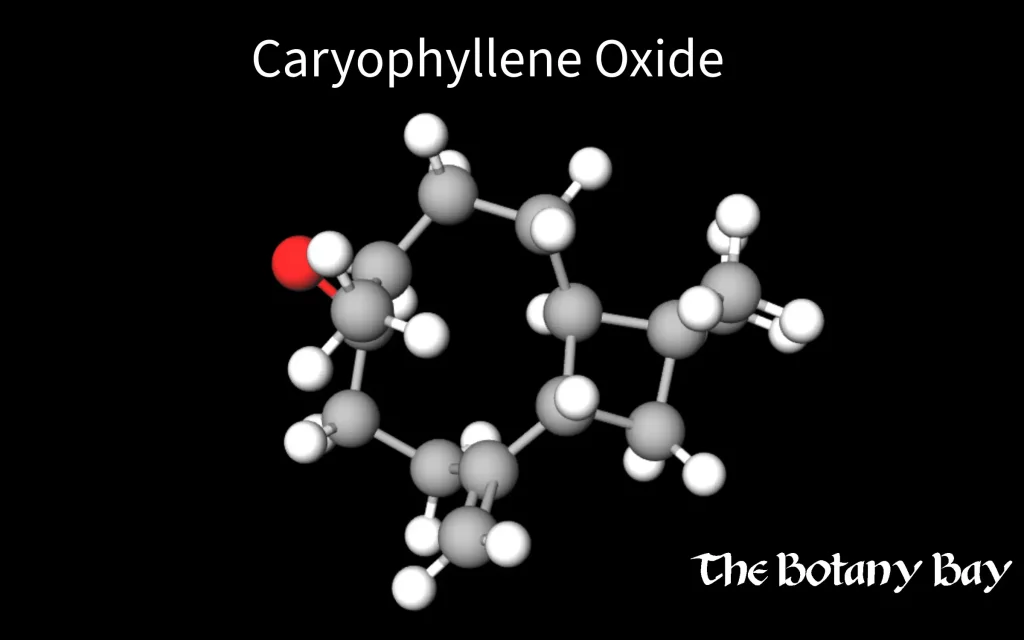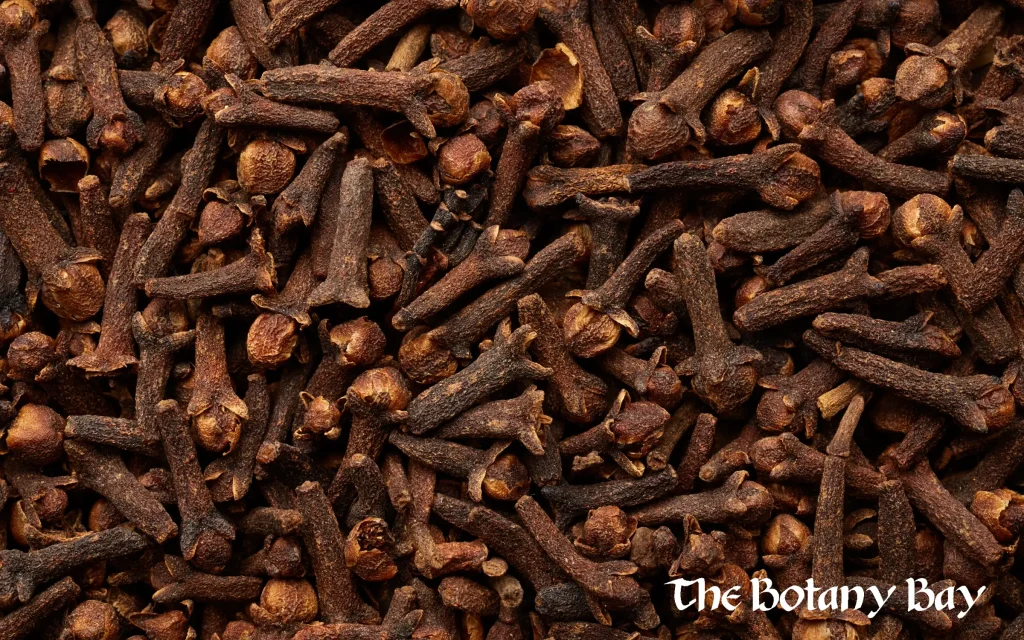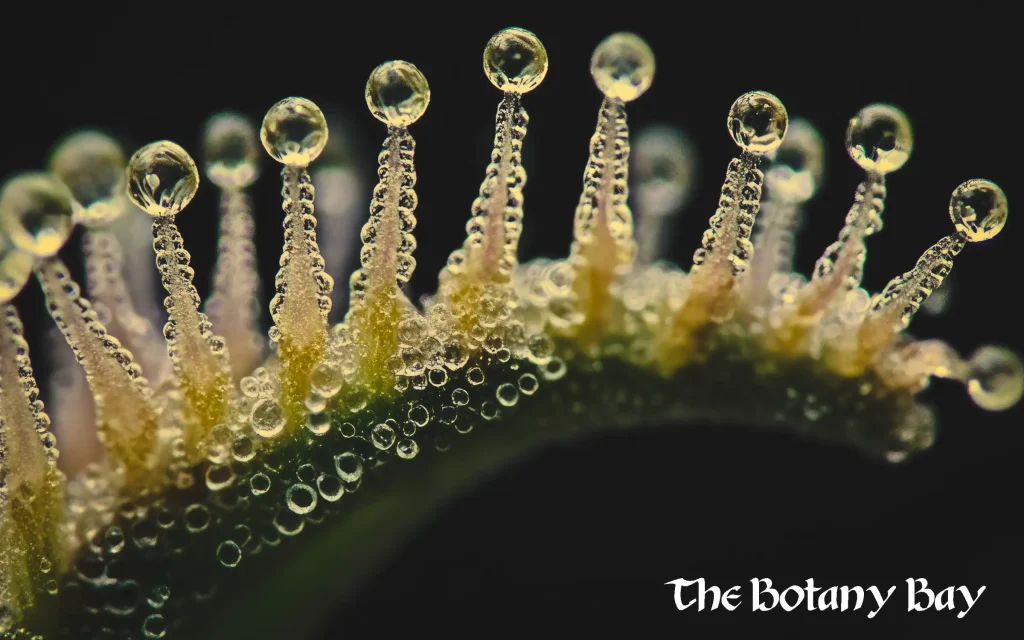Understanding Caryophyllene Oxide
Your Comprehensive Guide to Caryophyllene Oxide
At The Botany Bay, we believe in educating customers about all the unique compounds that shape the aroma, flavor, and potential effects of hemp, cannabis, and other botanicals. Caryophyllene oxide is a terpene oxide, a compound created when the terpene beta-caryophyllene interacts with oxygen. It has a distinctive spicy, woody scent and is known for being one of the compounds that sniffer dogs are trained to detect in cannabis.

What Is Caryophyllene Oxide?
Caryophyllene oxide is a naturally occurring terpene derivative found in cannabis, black pepper, cloves, basil, oregano, and other plants. It is formed when beta-caryophyllene, a common terpene in many herbs and spices, undergoes oxidation, either naturally during drying and storage or through plant metabolism.
It shares the warm, peppery, and slightly woody scent of its parent terpene, but with a sharper and more pronounced aroma due to the oxygenation.
How Caryophyllene Oxide Works in the Body
While research is limited, caryophyllene oxide is believed to interact with biological systems in ways similar to other terpenes:
It may contribute to the aroma and flavor profile of certain cannabis strains.
In plants, it likely plays a role in pest defense and antifungal activity.
Unlike beta-caryophyllene, which interacts with the body’s CB2 receptors, caryophyllene oxide’s activity is primarily aromatic rather than cannabinoid-like.
Effects are largely based on its scent and potential synergistic roles in the entourage effect rather than direct receptor binding.

Natural Sources of Caryophyllene Oxide
While cannabis is a known source, caryophyllene oxide is also present in:
Black pepper — sharp and spicy
Cloves — warm, sweet spice
Basil — herbal and fresh
Oregano — earthy and pungent
Rosemary — piney and slightly camphoraceous
Hops — contributing to beer’s spice-like aroma
Levels vary depending on how the plant is grown, harvested, and stored.
Beta-Caryophyllene vs. Caryophyllene Oxide
Same family, different twist. Flip to learn more.
Beta-caryophyllene is the original terpene, known for its peppery scent and CB2 receptor interaction.
Caryophyllene oxide is its oxidized form, with a sharper aroma and a key role in cannabis detection dogs.
The Terpene Dogs Can Smell
Law enforcement’s scent marker – flip the box for more info.
Caryophyllene oxide is one of the compounds used to train detection dogs for cannabis. Its strong, distinct aroma is consistent across many cannabis varieties.
Legal Status of Caryophyllene Oxide
Caryophyllene oxide is fully legal in the United States and most other countries. It is a naturally occurring, non-intoxicating compound found in many herbs, spices, and cannabis strains, and is widely used in fragrance, flavoring, and essential oil products.

Reported Effects and Benefits of Caryophyllene Oxide
Anecdotal reports and limited studies suggest caryophyllene oxide may:
Contribute to a spicy, woody, and slightly citrus aroma in certain plants.
Play a synergistic role in the entourage effect when present in cannabis.
Act as a natural preservative or antifungal agent in plants.
These effects are not medicinal claims but rather observations from aroma chemistry and plant science.
How to Experience Caryophyllene Oxide
You may encounter caryophyllene oxide naturally by:
Smelling fresh or dried black pepper
Using essential oils from clove, basil, or oregano
Enjoying cannabis or hemp products where it’s part of the terpene profile
It can also be purchased as a pure terpene isolate for use in formulating aroma blends, provided it is food-grade and lab-tested.
Testing and Transparency
At The Botany Bay, we ensure terpene-containing products are:
Third-party tested for purity and identification
Naturally derived when possible
Labeled with accurate terpene content and intended use
Free of harmful additives, fillers, or synthetic carriers
Compliance Disclaimer
This content is for educational purposes only and has not been evaluated by the Food and Drug Administration. Caryophyllene oxide and terpene products are not intended to diagnose, treat, cure, or prevent any disease. Always consult a healthcare provider before using any botanical or terpene product, especially if pregnant, nursing, or taking medications.
FAQs About Caryophyllene Oxide
Is caryophyllene oxide psychoactive?
Why is caryophyllene oxide important in cannabis?
Can I get caryophyllene oxide without cannabis?
Does caryophyllene oxide have benefits?
NEWSLETTER
Sign up to our newsletter to keep updated with our latest offers and products.
© 2025 The Botany Bay All Rights Reserved
Disclaimer:
Some products sold by The Botany Bay are not scheduled under U.S. federal law but may be subject to state or local restrictions. The Botany Bay conducts due diligence and restricts orders to jurisdictions where these products are legal. Orders placed to prohibited areas will not be fulfilled. However, it remains the customer’s responsibility to ensure compliance with any applicable local, state, or international laws before purchasing. These products have not been evaluated by the FDA and are not intended to diagnose, treat, cure, or prevent any disease.
Kratom Disclaimer:
This product is not available for shipment to the following states: Alabama, Arkansas, Indiana, Louisiana, Rhode Island (until April 1, 2026), Vermont, and Wisconsin; or the following localities: Sarasota County (Florida); San Diego, Oceanside, Newport Beach, and unincorporated San Diego County (California); Alton, Jerseyville, Edwardsville, Glen Carbon, and Godfrey (Illinois); Denver, Monument, and Parker (Colorado); and Union, Alcorn, Lowndes, Monroe, and Tishomingo Counties, as well as the cities of Columbus, Oxford, Ridgeland, Corinth, Belmont, and Gluckstadt (Mississippi).
Cannabinoid Disclaimer:
This product is not available for shipment to states that restrict or ban hemp-derived cannabinoids, including Alaska, Arizona, Arkansas, Colorado, Delaware, Hawaii, Idaho, Iowa, Mississippi, Montana, Nevada, New York, North Dakota, Rhode Island, Utah, and Vermont; or to jurisdictions with specific local prohibitions on psychoactive hemp derivatives (e.g., Delta-8, THCA).
Disambiguation Disclaimer: The Botany Bay is not affiliated with Botany Farms.
- 0 Items
- View Cart
